For this critical play, I played an online version of Monopoly called Rento. I chose to play this game because of the different design elements my team was considering when designing our own game, which is a twist on the Game of Life that centers around cards and interacting with others. Specifically, my team was unsure about using a physical board to represent the game, as we thought about how endless or infinite the game of monopoly feels like specifically due to the board. I have only played Monopoly once before, when I was really young, so I wanted to give it another shot.
Rento was created in 2016 by LAN Games, and is an online/computer-based 3D Monopoly-like game. The theme of the game is economics and competition-focused, with the players all trying to make the most money through investing in properties, houses, and making appropriate trades sales. Tied to this are the many formal elements of the game, including that there can be four to six players who are all hoping to capture as much property as possible and outwit their counterparts to win the entire game. The main resources associated with the gameplay are the physical money, properties, and the houses/hotels associated with them. The rules and procedures are similar to that of a standard monopoly game so I won’t dive into those too much during this description.
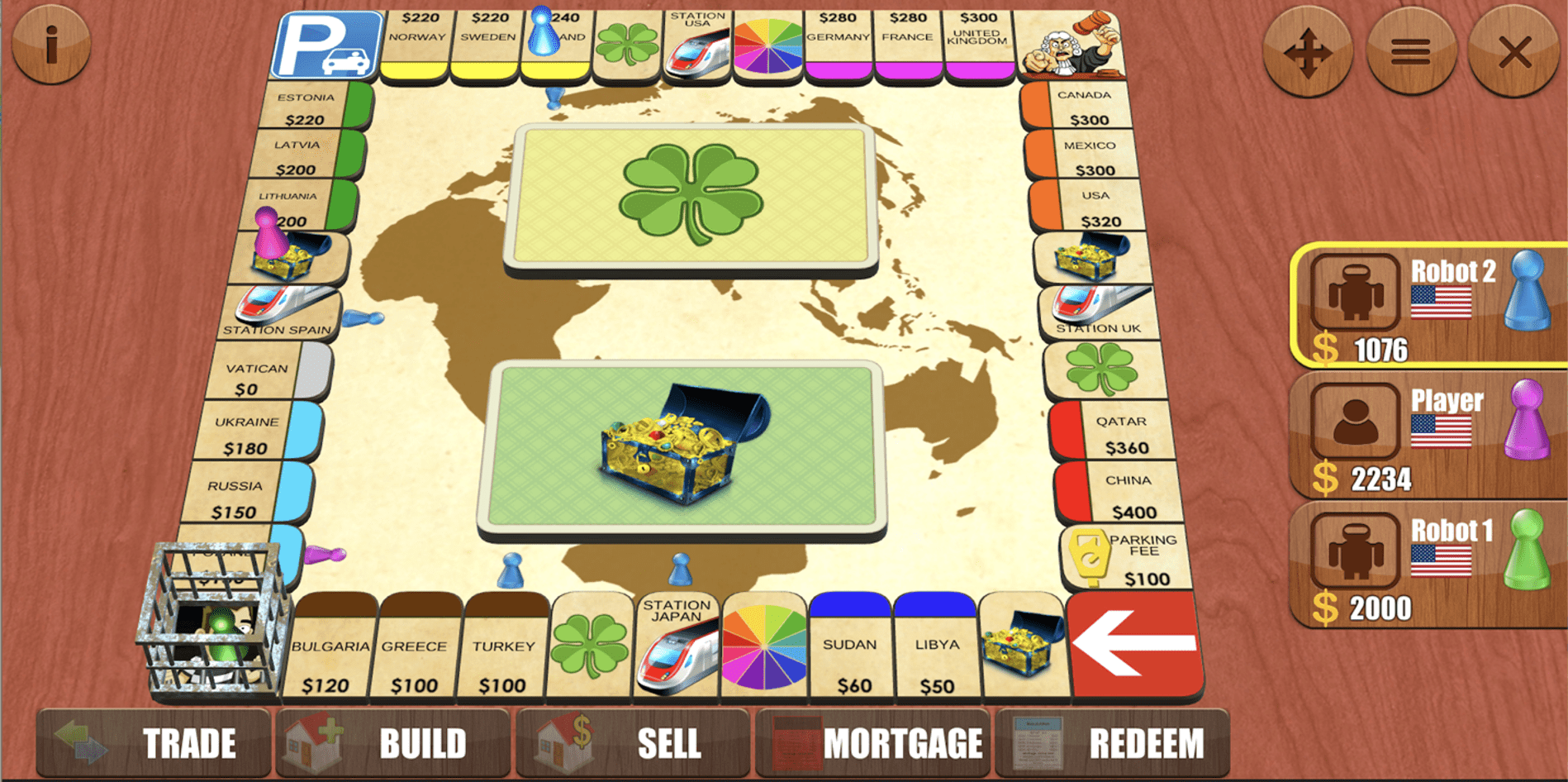
The type of fun associated with this game was fellowship and discovery. We rely on social skills to make trades with others, or convince them to sell us properties that will help us win. We also are constantly discovering new properties and new cards that allow us to make more money or scam other players within the game. These small choices that are standard of a Monopoly game, combined with Rento features such as the Wheel of Fortune add an additional layer of fun. These new features allow us to make money in a more random way, rather than strategic, which adds a wild card factor to the game. However, I will admit that the Wheel of Fortune’s design failed, since good results (such as winning $100) and bad results were played with the same sad sound, making it indistinguishable to users and adding confusion to the game. 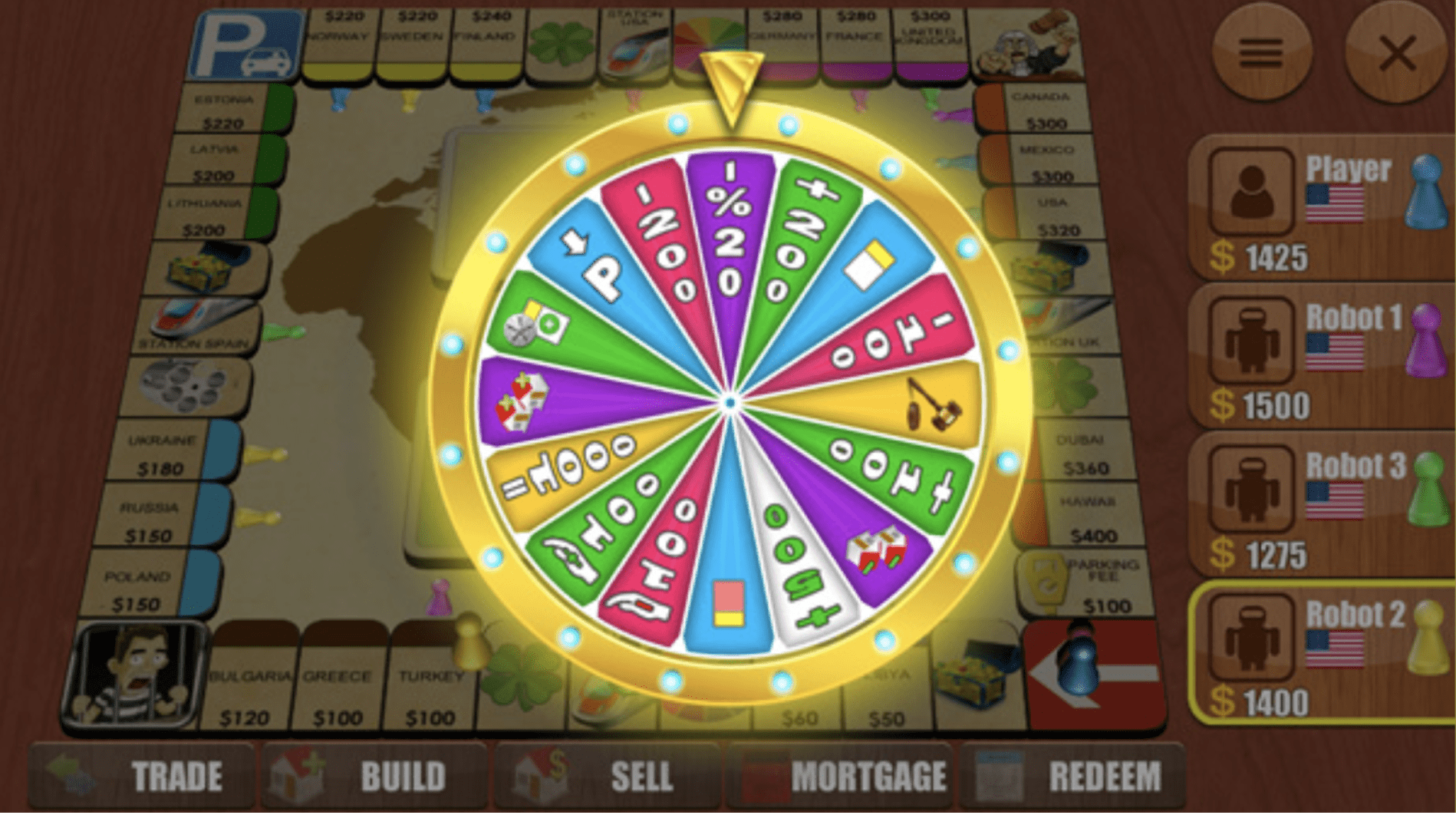
In comparison to other games in the genre, Rento took the game to a new level by relying on familiar pop culture elements to create slight twists to the standard Monopoly game. Many of these twists were interesting, but my favorite was the Luck Cards that made the game more competitive, including:
- Tornado
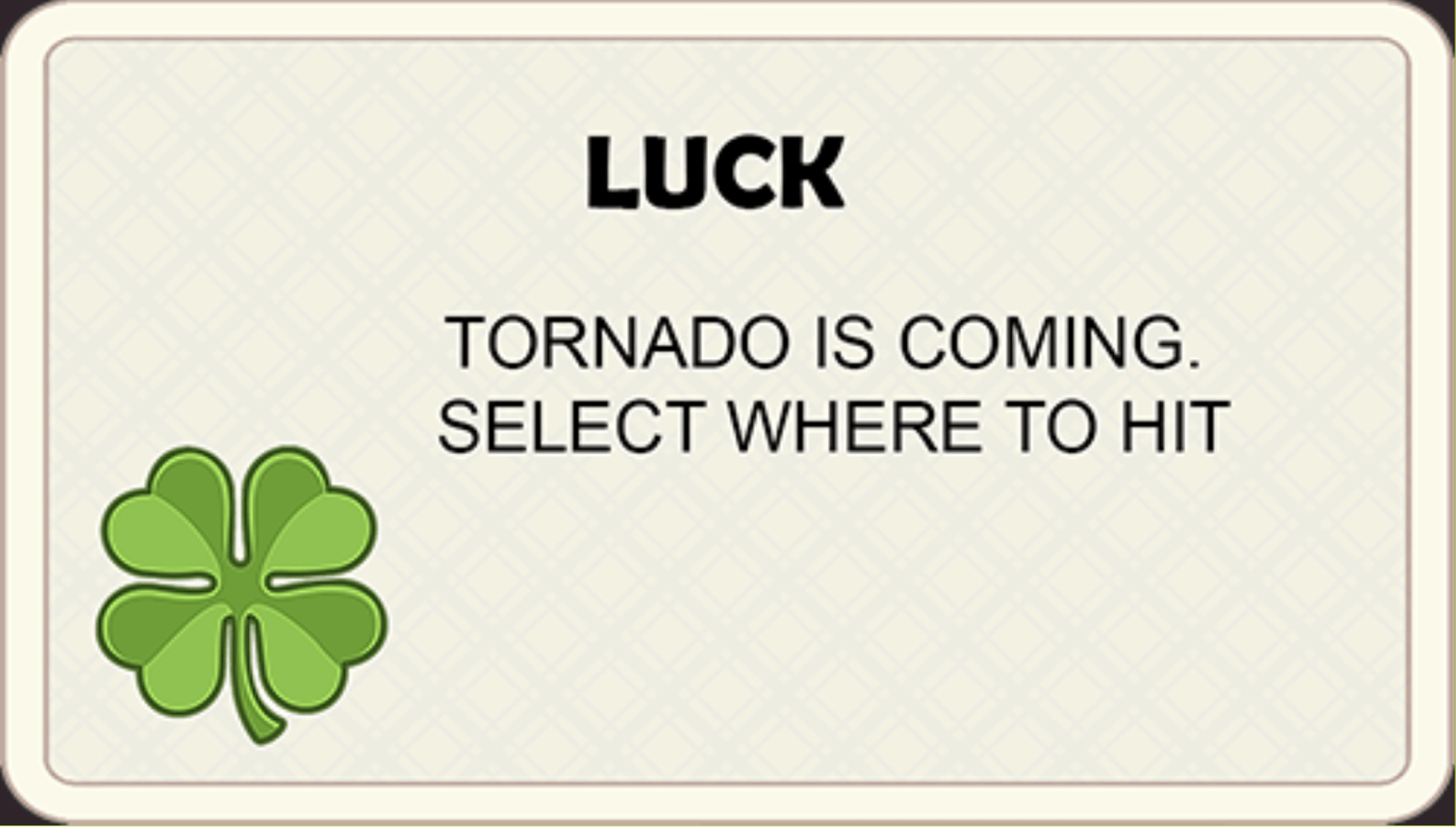
- Lightning Strike
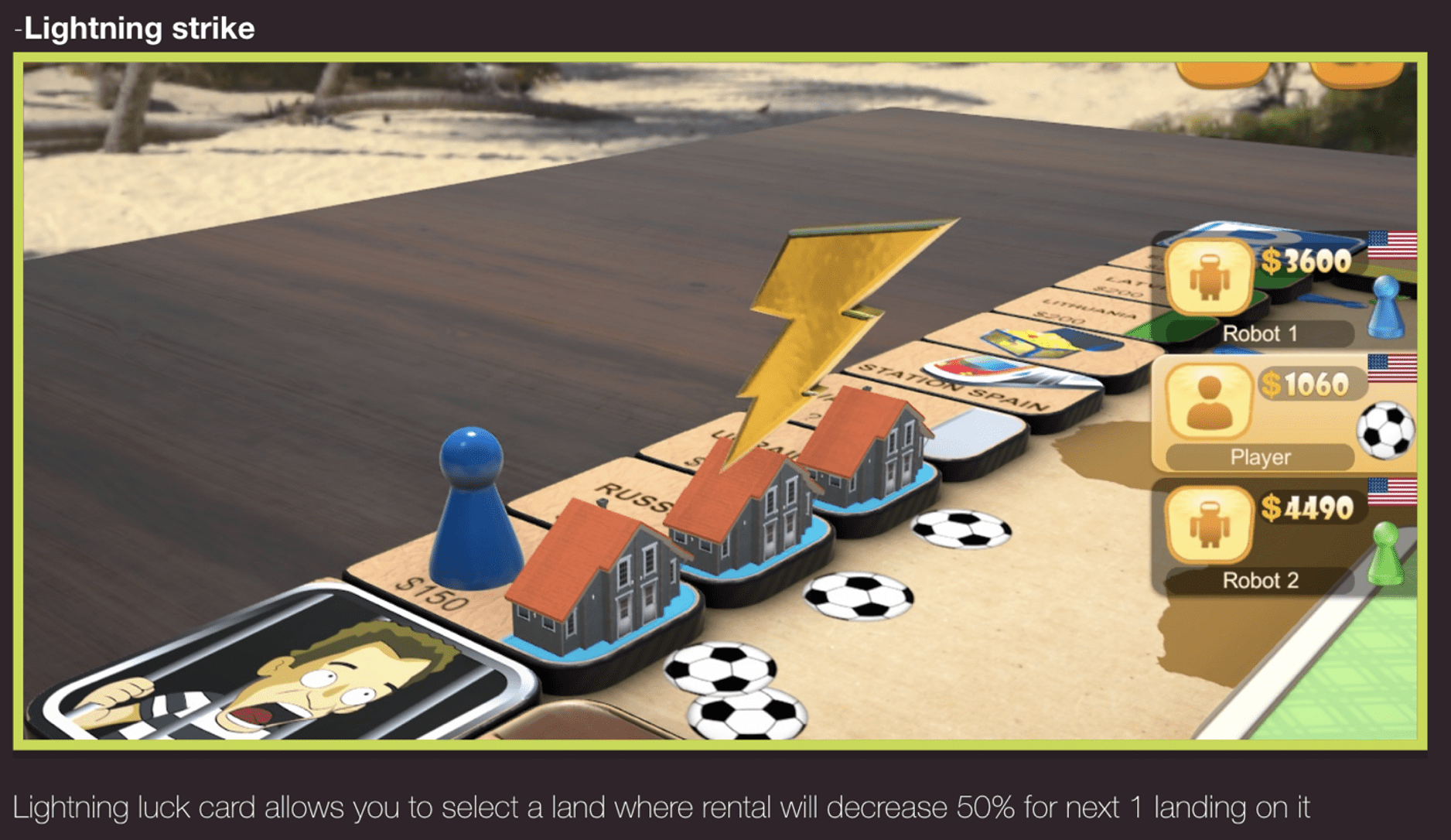
- Trap
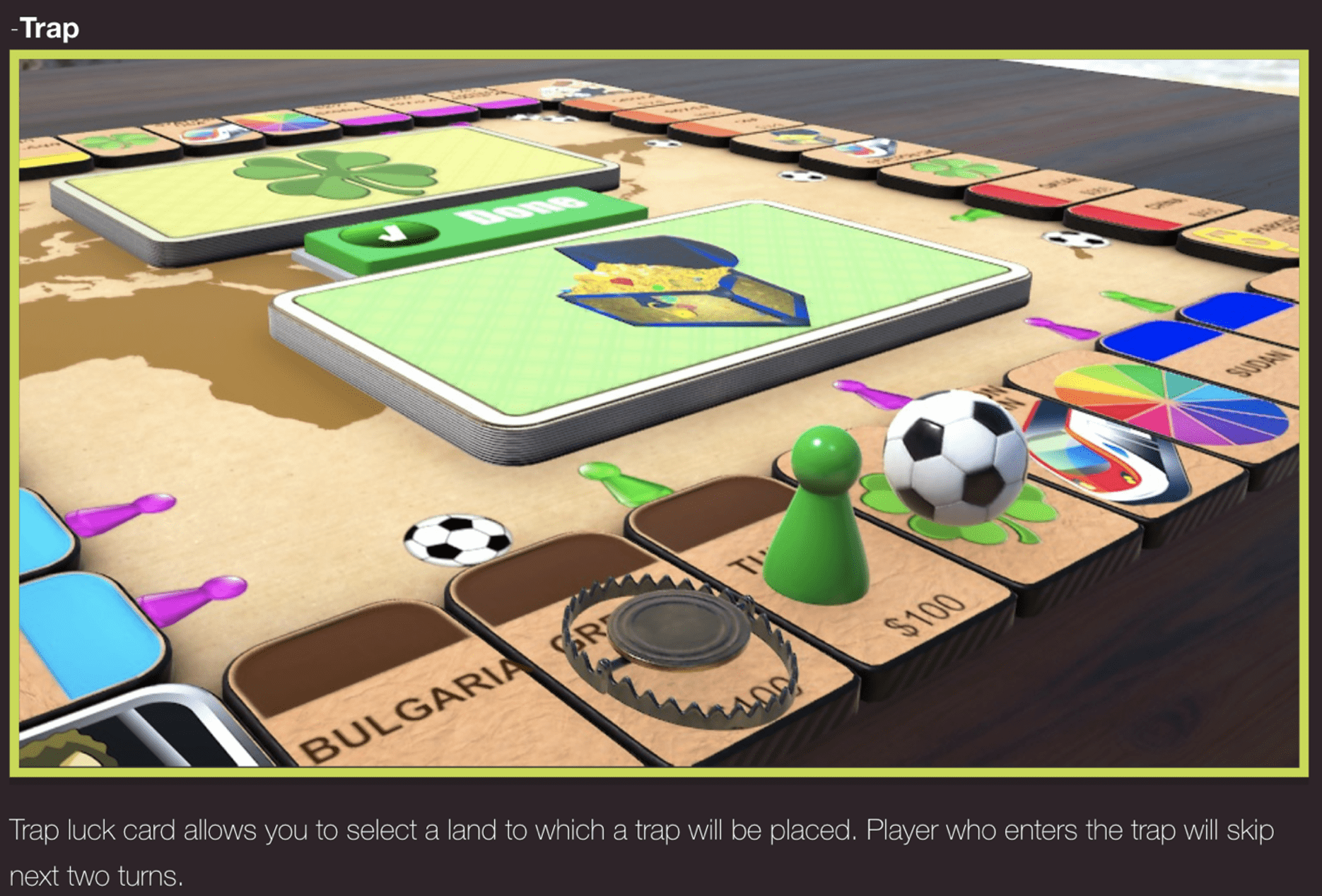
- Bed
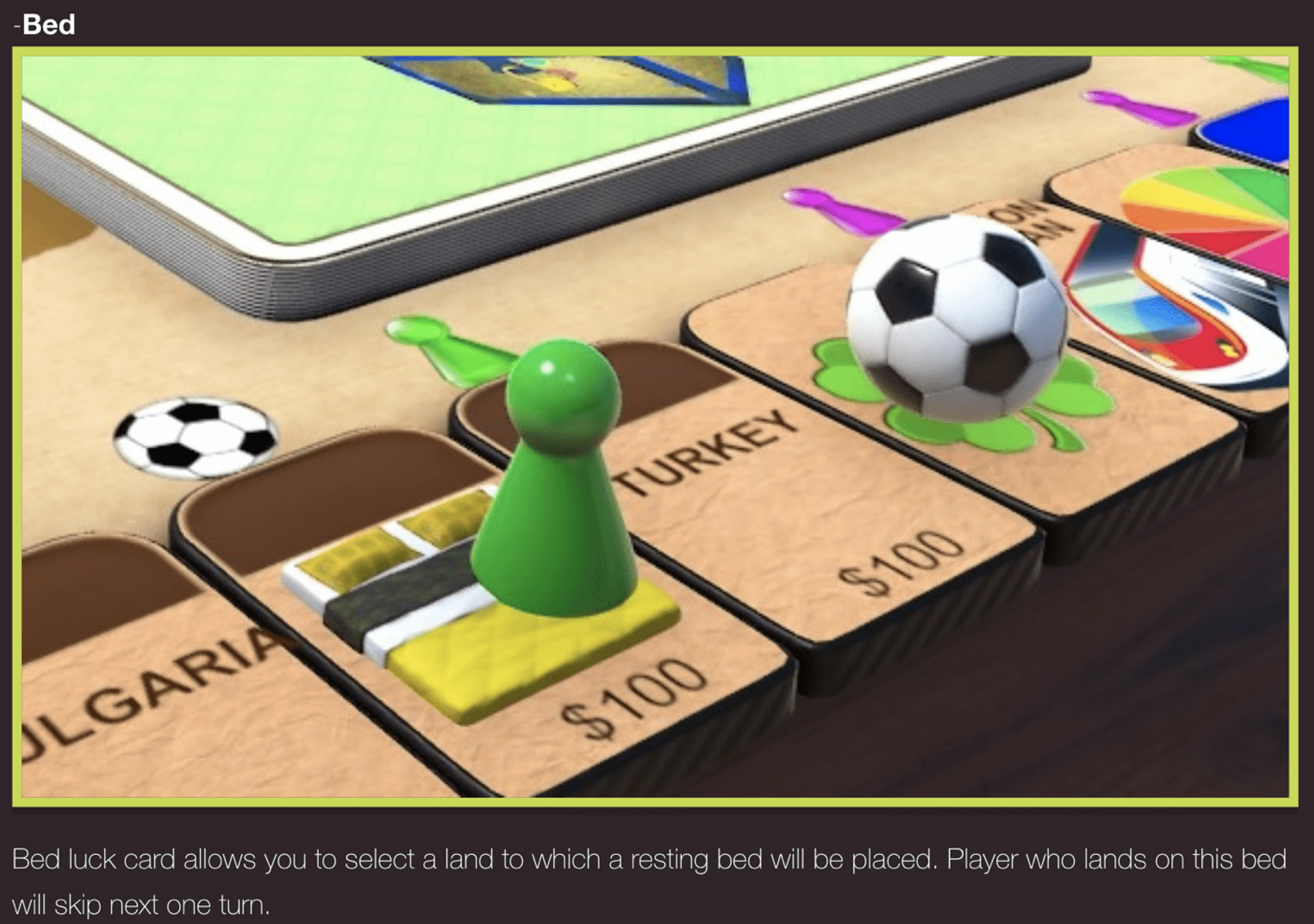
These specific cards introduced new forms of abuse and targeting between players, giving individuals ways to interact with each other beyond the collecting/charging of rent. I thought this showcased how much the static board could remain the same, but small changes in cards and actions could completely revolutionize the game. My friends and I played Rento for over an hour and were constantly shocked by the new features we weren’t used to in Monopoly, which I’m sure is exactly what the game designers intended to do and what they succeeded at.


